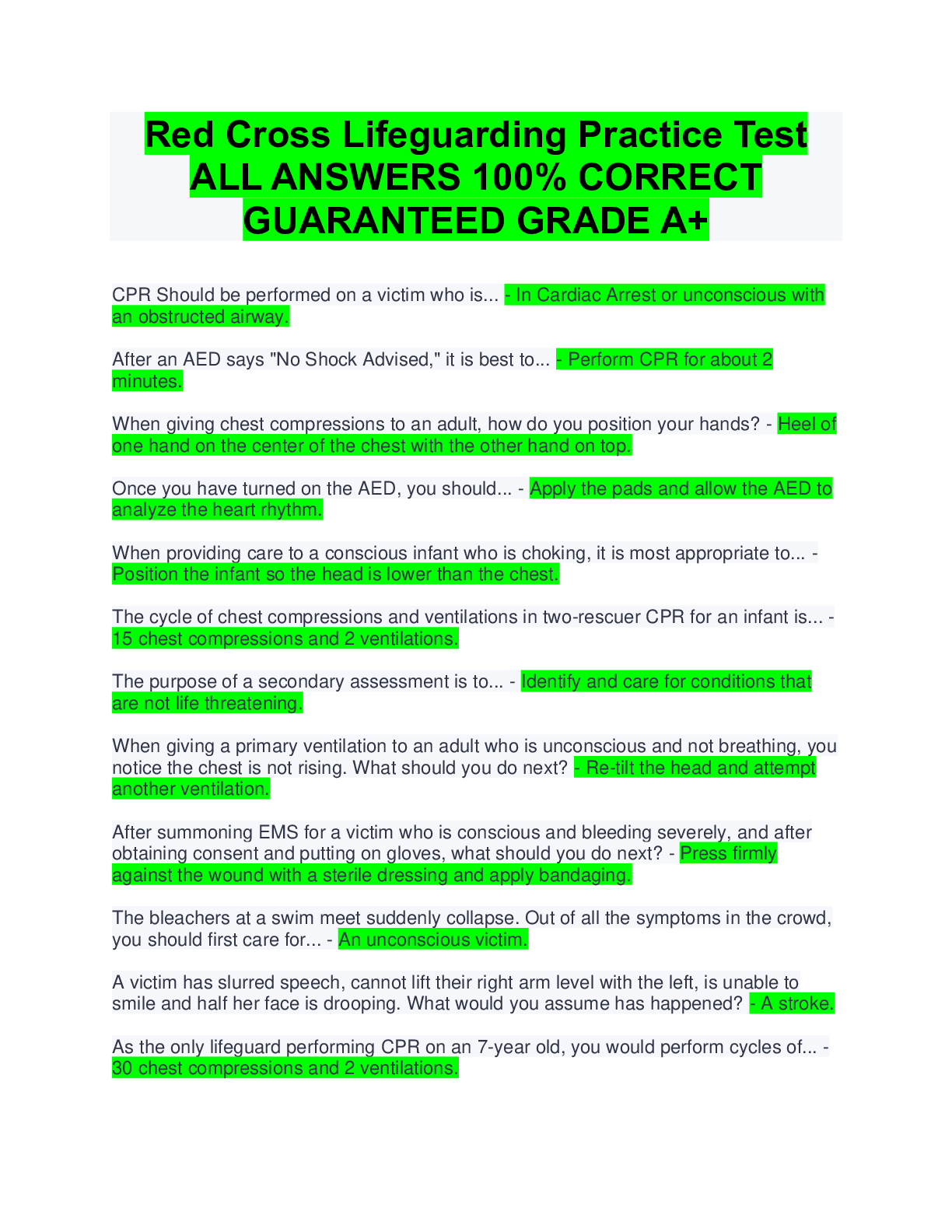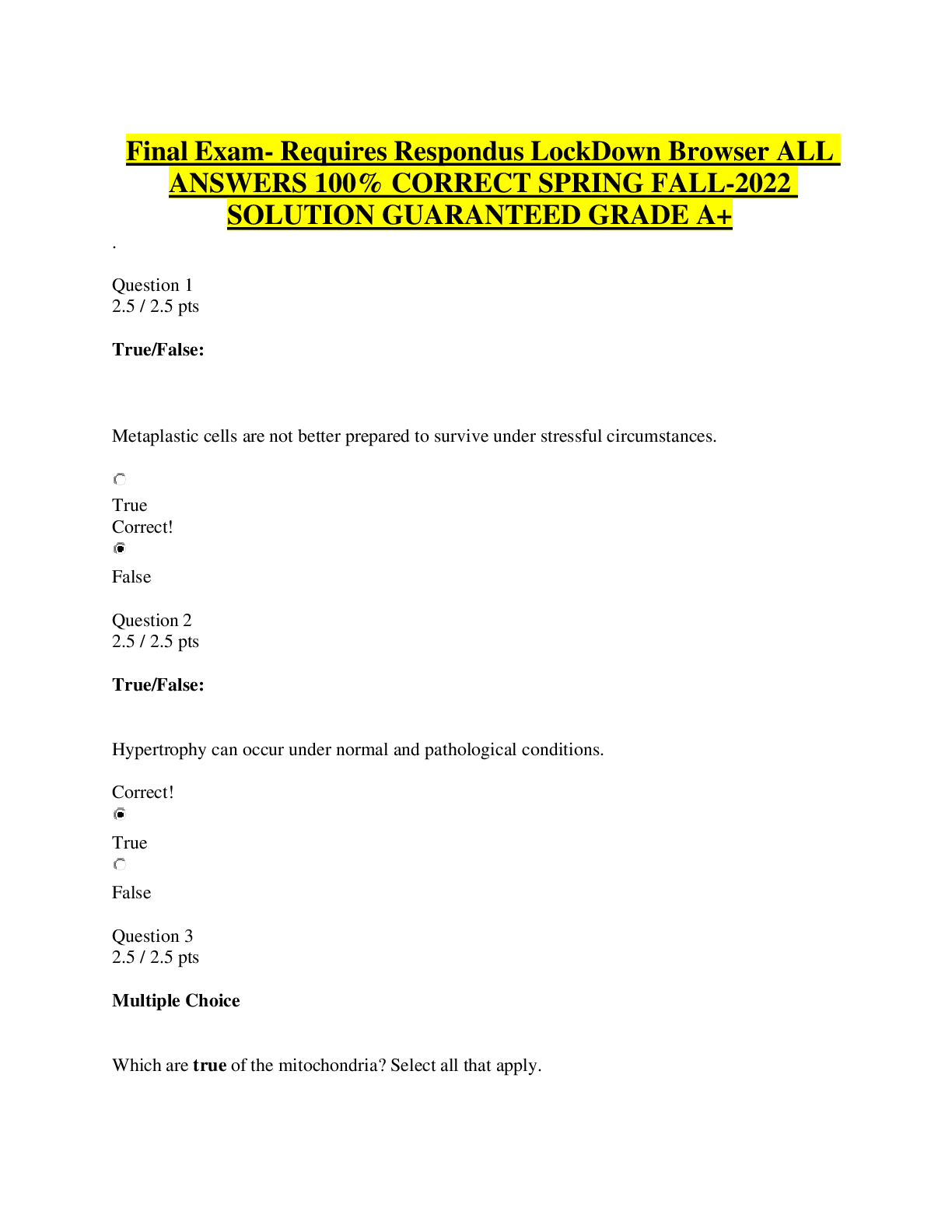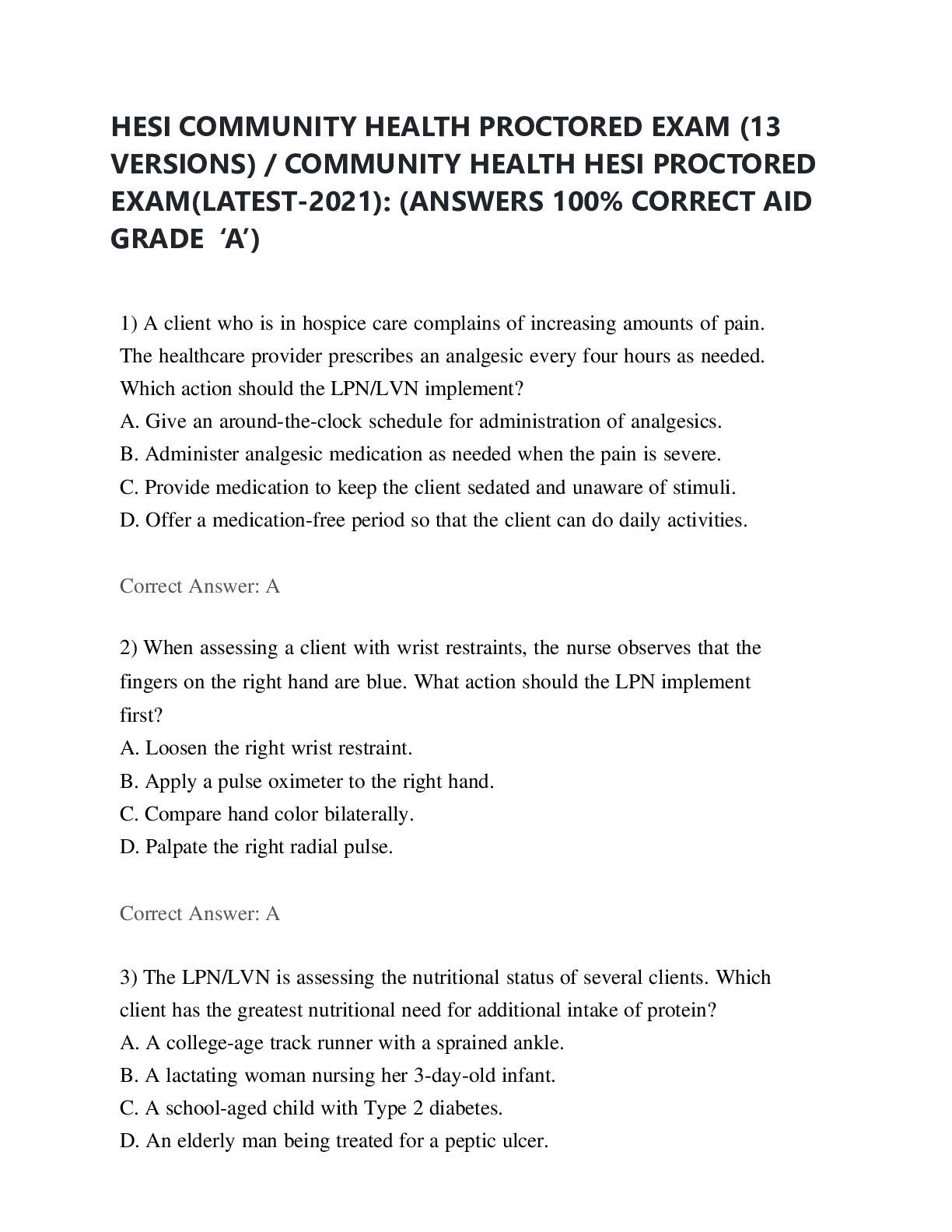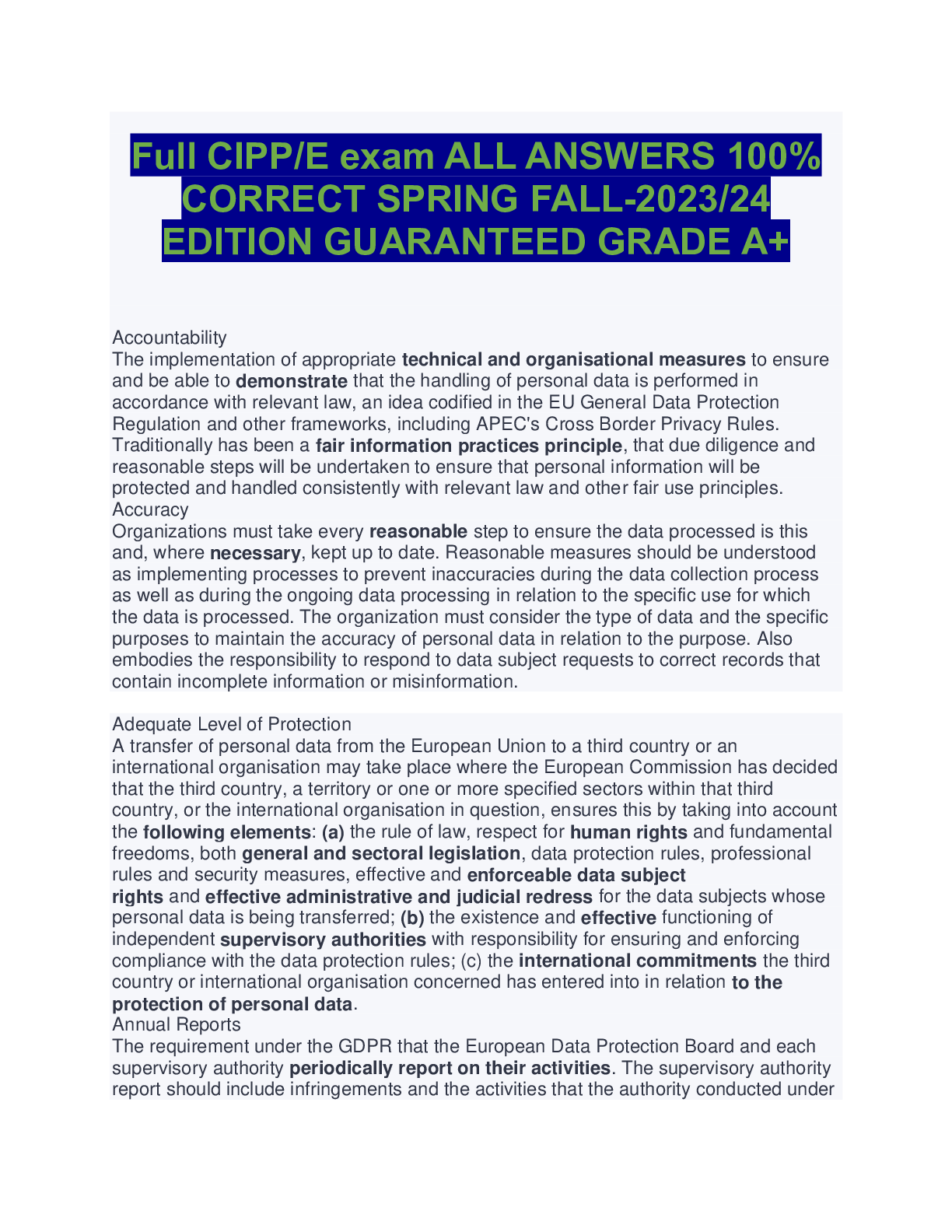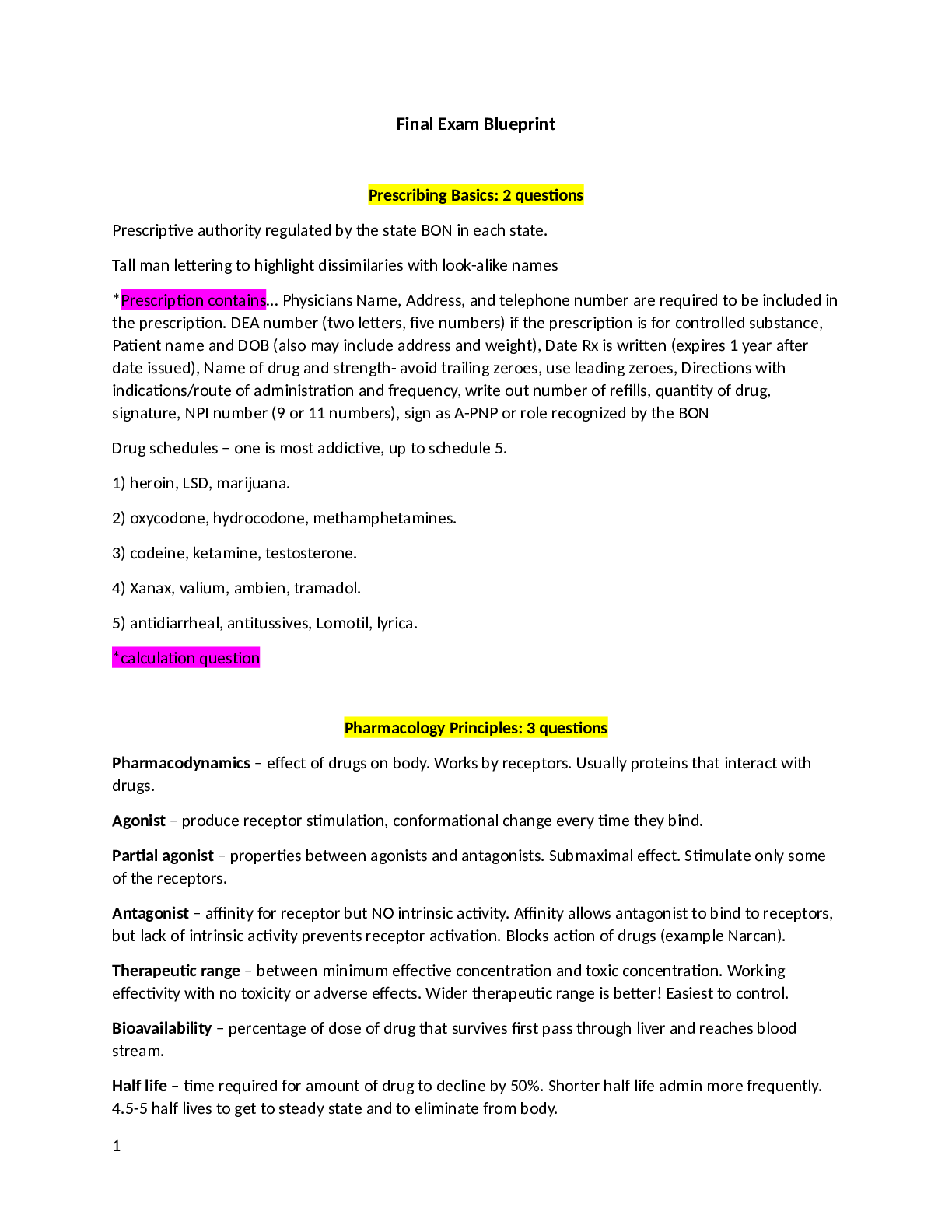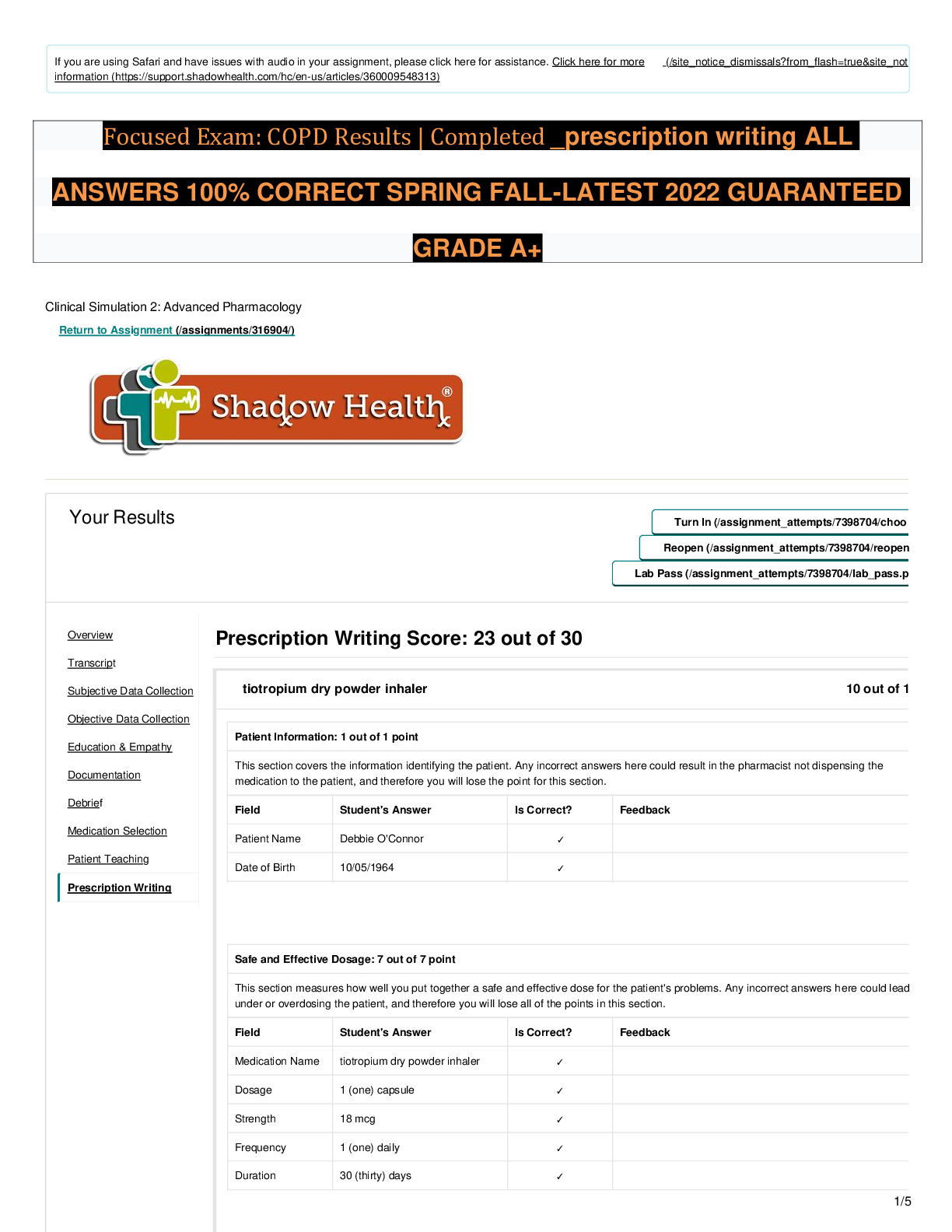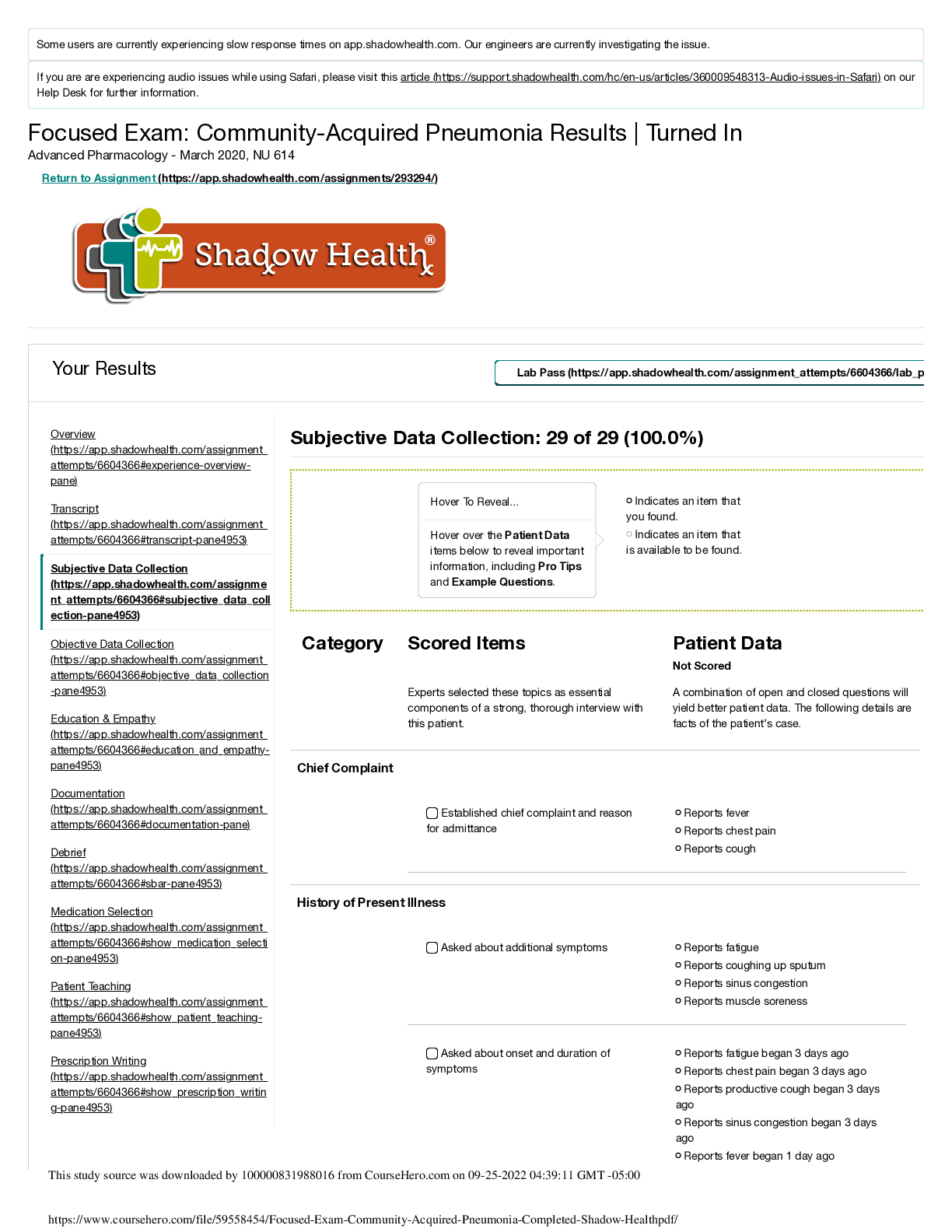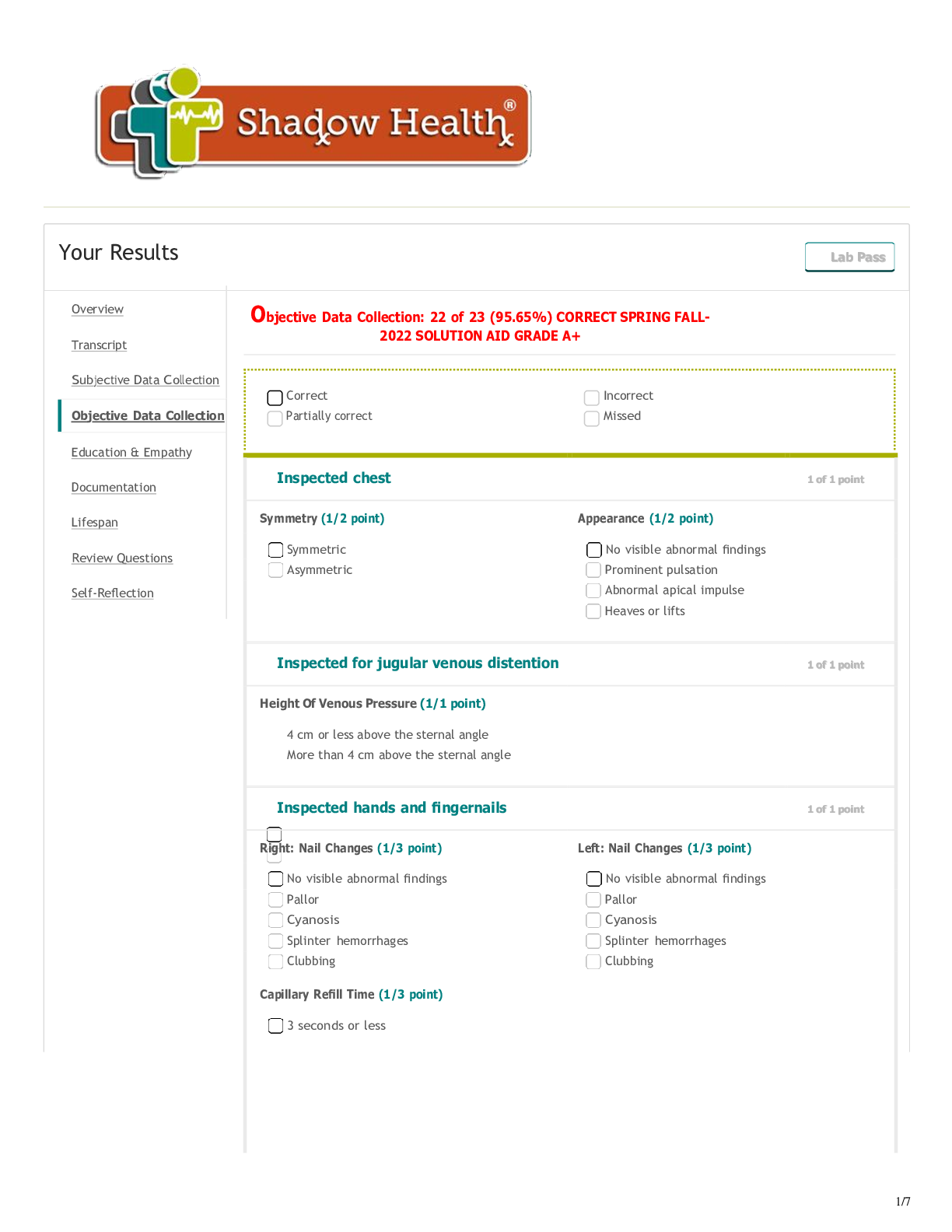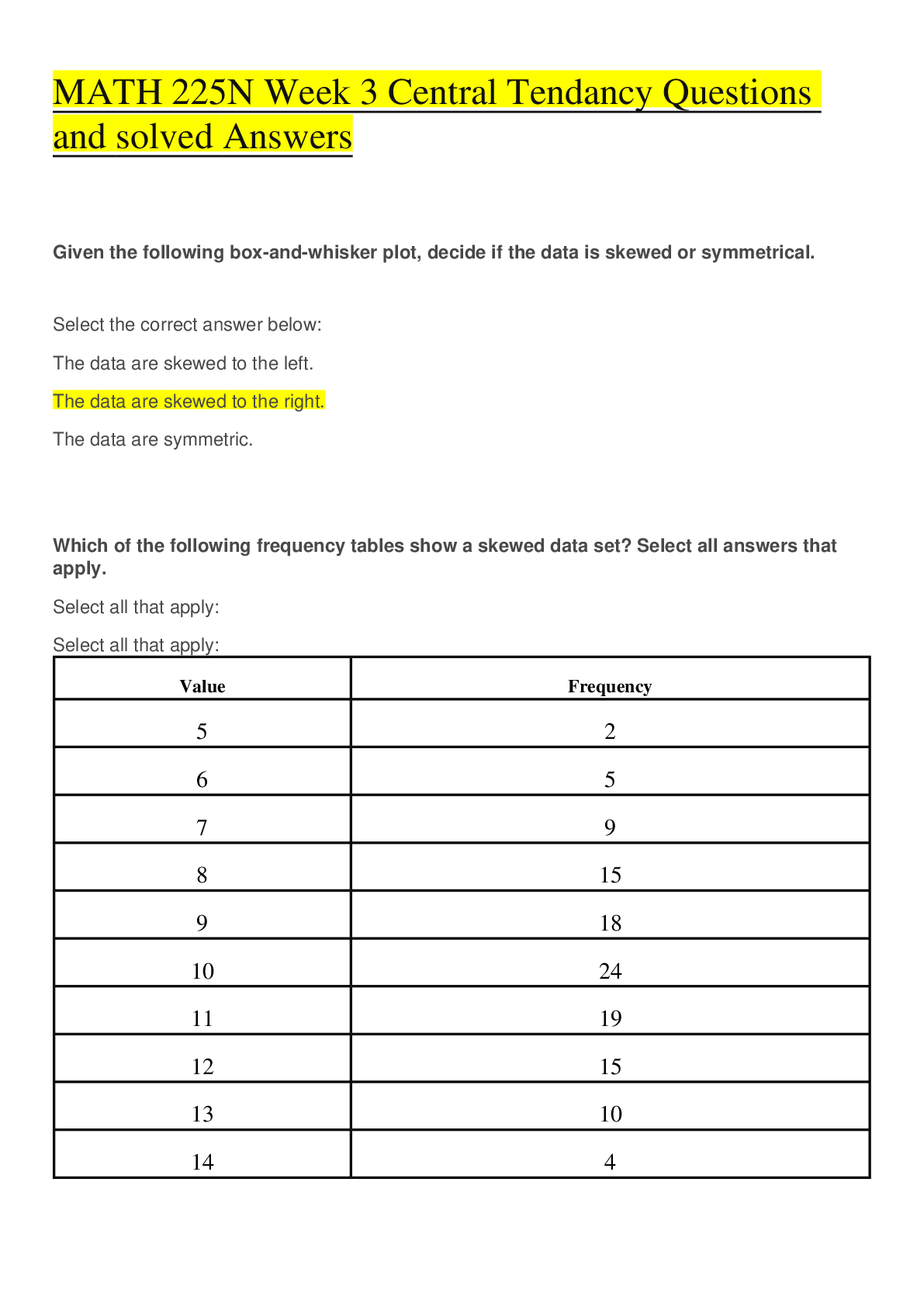Organizational Behavior > EXAM > PEGA CSA II EXAM ALL ANSWERS 100% CORRECT SPRING FALL- 2023/24 EDITION GUARANTEED GRADE A+ (All)
PEGA CSA II EXAM ALL ANSWERS 100% CORRECT SPRING FALL- 2023/24 EDITION GUARANTEED GRADE A+
Document Content and Description Below
Organising stages Stages typically represent the transfer of the cases from one authority to another, or from one part of the organisation to another. Stages may also represent a significant change i... n the status of the case. Naming stages Use names that are most meaningful and relevant to the business users. Use a noun or noun phrase limit = 2 words Consider limiting the number of stages in any given case type to 7 (plus or minus 2) Process step A process contains a series of tasks, or steps By organising related task into processes, you can control how, when, and by when work is performed in each stage of the life cycle. Organizing process steps Use a „ verb+noun" naming convention Every process should have a goal that can be expressed as a singular outcome. Consider limiting the number of steps in each process to five, plus or minus two. When determining if you need to use an optional user action, consider the following questions: Should users be allowed to update information at any time during a case or stage? Do you need multiple steps to update information? Can information be updated in a single screen? Typ of decisions points Boolean Expression, Decision Table, Decision Tree, Fork, Map Value, Predictive Model, Scorecard Model. Out-of-the-box (OOTB) routing options Work queue of a work group = You route to a work queue for a specific group when anyone in the group can complete the assignment. Work list of a specific user = You route an assignment to the work list of a specific user (e.g. Manger) Current user = Your route assignment to the current user if the current user should perform the task. For example, the employee creating the request enters the expense details. Business logic based on a when condition Operator record 1. Organosational structure 2. Work group 3. Work queue 4. Skill 5. Calender 6. Scheduled absence Approve/reject considerations 1. Who needs to perform the approval: a single user or multiple users? 2. For cascading approval, how many approvals are required - is approval by the entire reporting structure required, or a subset of the the hierarchy? For example, director approval is required only for expenses reports that exceed a specified total. 3.How are approvals and rejections handled? Should the case change to a different stage, or can processing continue? Is a status change needed Rules Rules describe the behavior of individual cases. The Pega Platform uses the rules you create to generate application code. Rule type Each rule is an instance of a rule type. A rule type is an abstract model of a specific case behavior. Pega provides many rule types. You can think of a rule type as a template for creating a rule. When you create a new rule, you first select the rule type, which determines the properties that are required to implement the associated case behavior. Modularity of rules 1. Versioning 2. Delegation 3. Reuse Ruleset [Show More]
Last updated: 2 years ago
Preview 1 out of 8 pages

Buy this document to get the full access instantly
Instant Download Access after purchase
Buy NowInstant download
We Accept:

Reviews( 0 )
$10.50
Can't find what you want? Try our AI powered Search
Document information
Connected school, study & course
About the document
Uploaded On
Jan 07, 2023
Number of pages
8
Written in
Additional information
This document has been written for:
Uploaded
Jan 07, 2023
Downloads
0
Views
65

